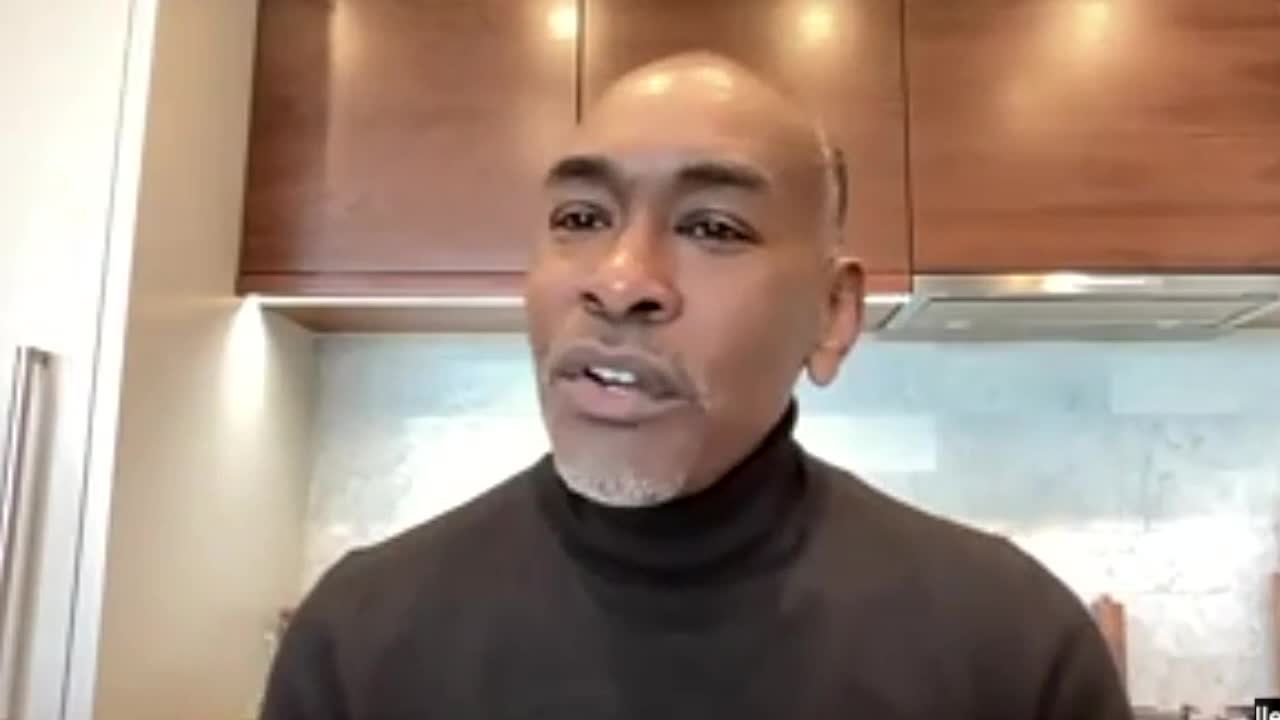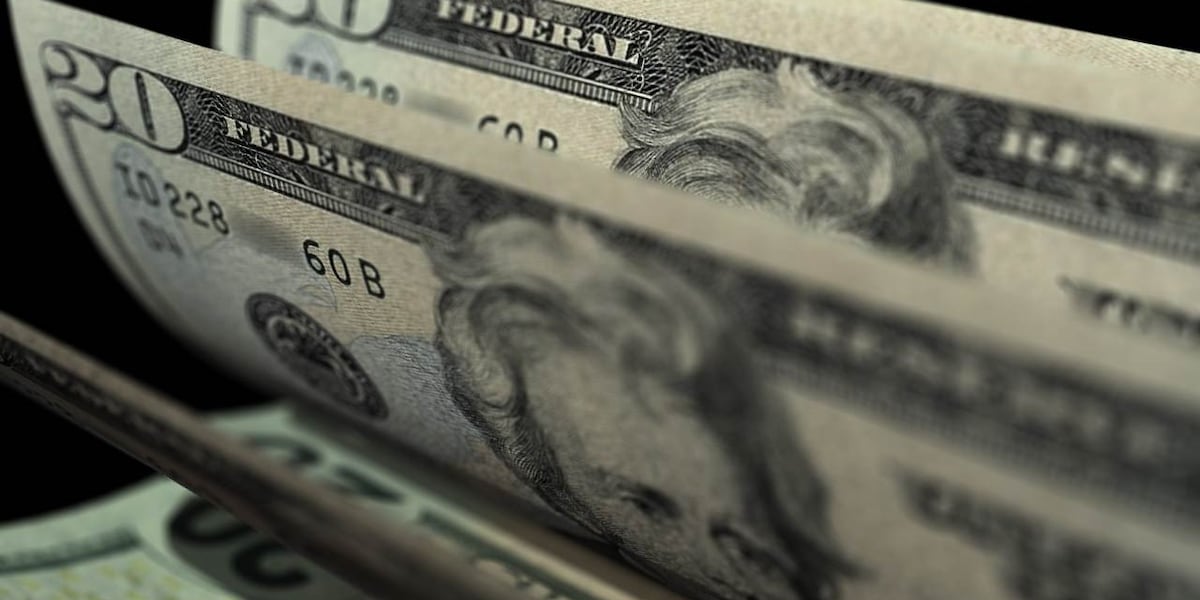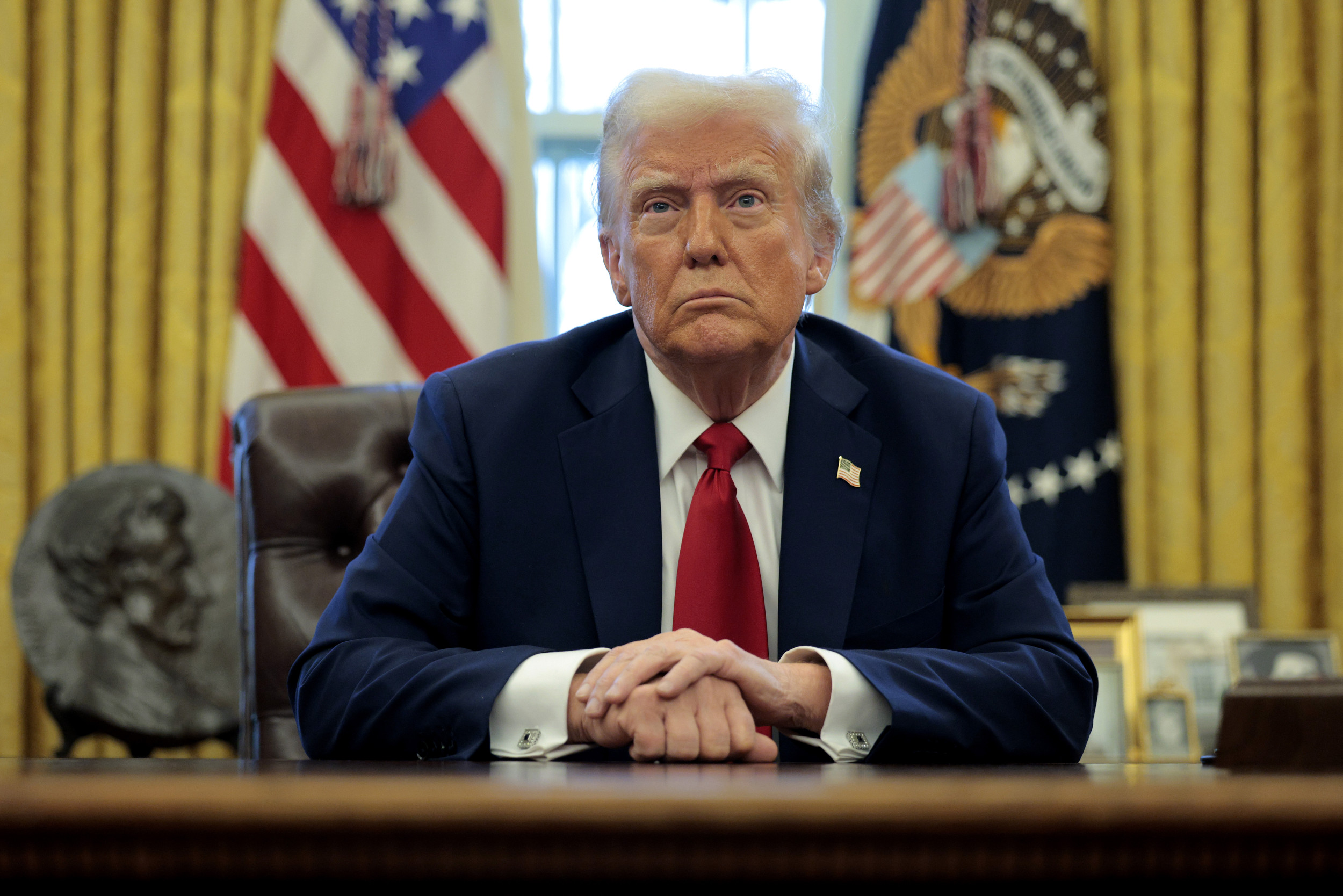Business
Why Everyone Is Still Talking About ‘Paddington 2’

“Paddington 2 is the greatest film ever made,” one user posted on X in 2022.
This tweet was not ironic.
In the seven years since its release in January 2018, the film about a marmalade-loving bear’s quest to find the perfect gift for his beloved aunt has become an internet phenomenon, spawning memes, think pieces and an endorsement from Nicolas Cage. For a time, it was the best-reviewed film ever on the aggregator site Rotten Tomatoes.
“A very eclectic group of people respond to it in the way that they do,” David Heyman, a producer on “Paddington 2” and its 2015 predecessor, “Paddington,” said in a recent phone conversation from his home in London. The Mexican filmmaker Guillermo del Toro, for example, confessed to Heyman he was a fan.
Now with the third feature-length installment in the franchise, “Paddington in Peru,” in theaters — and already having passed the $100 million milestone at the international box office — it is hard to imagine that when “Paddington 2” first arrived in theaters stateside, it was only a modest box office success. Since its DVD and streaming releases, a devoted community of online fans has sprung up around it, evangelizing about the outsider bear who brought joy to their lives.
“There’s humor in it for adults; there’s humor for children,” said Heyman, who grew up reading the Paddington books, written by the British author Michael Bond. “It never feels patronizing or like it’s talking down to its audience. It has a big, beating heart.”
All three films are based on the children’s books about the duffle-coated, hard-staring bear, first published in 1958. In the first movie, Paddington emigrates from Peru to London in a story inspired by the World War II rescue operation that brought nearly 10,000 children from Nazi-occupied Europe to England. The second film, directed by Paul King, who wrote the script with Simon Farnaby, is an action adventure with stunning set sequences, following Paddington through a court trial, a prison escape and a daring pursuit by train.
Securing the return of the original film’s cast members — the gentle-voiced Ben Whishaw as Paddington, Hugh Bonneville as the hapless but well-meaning Mr. Brown and Sally Hawkins as the openhearted Mrs. Brown — was easy, Heyman said. And bringing in a dream team of new ones — Hugh Grant as the ridiculously campy villain, Phoenix Buchanan — was also a breeze.
“Hugh knows a good part,” he said, laughing.
King’s confidence as a director grew from the first film to the second, Heyman said, as he became more comfortable with the bevy of visual effects required to create the C.G.I. bear, who was represented during filming by a toy bear head on a stick.
“There was a lot more time to focus on the script and on working with the actors,” Heyman said. “It was really fun. The spirit of the film was reflected on set.”
That was maybe most evident in the rollicking Busby Berkeley-style dance number that unspools inside the prison as the end credits begin to roll. Locked up for 10 years for his scheme to frame Paddington for stealing a pop-up book, Phoenix, a former actor, finally gets his star turn. He leads the roughly 300 other prisoners in a tap number set to “Rain on the Roof” from Stephen Sondheim’s musical “Follies.”
“Hugh was all in,” said the choreographer Craig Revel Horwood, who created the 90-second number, which was shot in sections over 19 hours the day before the set was to be demolished. He recruited 300 of his tattooed, heavyset professional dancer friends to make up the corps.
“Anyone that looked rough, we were putting in,” said Horwood, who spent about a month planning the number, including three weeks teaching Grant to tap dance. “I had no problem getting anyone for the gig. Not one person turned me down.”
He outfitted the scruffy-looking extras with pastel umbrellas and size XXL bedazzled pink-striped uniforms — “when I saw everyone in costume, I was killing myself laughing,” he said — then shot from sunup to sundown, squeezing in the last few takes as a midnight deadline approached.
“It’s sort of a Momma Rose in ‘Gypsy’ moment,” he said. “‘Everything’s Coming Up Roses,’ that type of number.”
The same could not be said for the film’s initial U.S. box office receipts. Though “Paddington 2” had been a big success in Britain, it struggled to separate itself from the pack over a Martin Luther King Jr. holiday weekend, grossing a modest $15 million on a $40 million budget, according to the data site Box Office Mojo.
One challenge, Heyman explained, was that the Weinstein Company, which initially held partial North American distribution rights for the film, was in a fiscal crisis exacerbated by the numerous sexual assault allegations leveled against Harvey Weinstein, its co-founder and former co-chairman. On the verge of filing for bankruptcy, the company did not sell the rights to Warner Bros. until less than two months before the film’s release date.
“So Warners had one hand tied behind their back in terms of marketing,” Heyman said.
Eventually, strong reviews, including from this newspaper, and word-of-mouth praise helped the film in the United States, but it never attained the success that it had in Britain, where it would go on to become the sixth-highest-grossing film of 2017, according to Box Office Mojo.
That is, until “Paddington 2” became available to watch on Amazon Prime Video in March 2018 and then became a streaming hit in 2020 during the coronavirus pandemic.
“The film shows what can be if people have more empathy towards one another,” said Jason Chou, 28, a Los-Angeles-based visual effects artist.
But not everyone saw a generous spirit in King and Farnaby’s version of the classic bear.
One odd footnote to the reputation of “Paddington 2” appeared in a blog a few years after the film came out. The movie had a solid perfect score on Rotten Tomatoes. Suddenly, in 2021, it dropped to 99 percent after a freelance film critic wrote on his blog that he had given “Paddington 2” a negative review on BBC Radio in 2017 (no one has been able to find that review).
The blogger, Eddie Harrison, wrote that he had grown up reading the Bond books, and that in “Paddington 2,” the bear’s “charm is entirely missing,” and he has “evil, beady eyes and ratty fur.”
“This is not my Paddington Bear,” he added, “but a sinister, malevolent imposter who should be shot into space, or nuked from space at the first opportunity.”
Within twelve hours of his blog post in May 2021, he became Public Enemy No. 1 for the Paddington hive. And hours after the score dropped, The Hollywood Reporter published an article about the downgrade, with dozens of news outlets following.
Why did Harrison bother?
“I recognised that a revised critique would knock Paddington off a perfect RT score,” Harrison wrote on his blog, the Film Authority, in an account of the fallout. But he hadn’t, he noted, anticipated the intensity of the vitriol, which, he said, included doxxing and vandalism, as well as death threats.
“It’s just an opinion, man,” said Harrison, who labeled “Paddington in Peru” “passable but rather ordinary.”
Heyman certainly maintains a different take on “Paddington 2,” one shared across the internet, even as the third film, which follows the bear back to Peru, has garnered lukewarm reviews.
“The second one is about looking for the good in people,” Heyman said, “because if people find it, then they’ll be able to find it in themselves.”
“In a time of life with cynicism, Paddington is a remarkably generous-spirited, uncynical character,” he added. “And the film reflects that.”

Business
Charlie Javice Found Guilty of Defrauding JPMorgan in $175 Million Acquisition

Charlie Javice, who made big headlines in 2023 when JPMorgan Chase accused her of faking her start-up’s customer list, was found guilty in federal court Friday of three counts of fraud and one count of conspiracy to commit fraud.
She now faces the possibility of decades in prison.
The bank has its own civil lawsuit on standby as it attempts to claw back some of the $175 million it paid for her company, Frank. It sued her three years ago, and Ms. Javice was arrested at Newark Liberty International Airport not long after that.
Frank, which was founded in 2016, aimed to help customers fill out the Free Application for Federal Student Aid at a time when the FAFSA was notoriously complicated. Ms. Javice, 32, quickly became a go-to quote for journalists writing about paying for college and turned up on lists of under-30 and under-40 up-and-comers.
Not long after Ms. Javice sold Frank to JPMorgan, there was trouble. The bank ran a test of Frank’s customer list, hoping to persuade its young customers to open Chase accounts. Of 400,000 outbound emails, just 28 percent arrived successfully in an inbox.
At trial, a bank executive said that it had opened just 10 accounts via the Frank list. It was, as the bank put it in its own legal filing, “disastrous.”
An internal investigation ensued, and the bank claimed to have found evidence that Ms. Javice and Olivier Amar, Frank’s chief growth and acquisition officer, had faked much of its customer list. JPMorgan sued her, and the federal government followed with its own charges, which resulted in the verdict Friday.
Mr. Amar was charged and tried at the same time as Ms. Javice and was also found guilty on all counts. A JPMorgan spokesman declined to comment on the verdict.
During the trial, JPMorgan bank executives said that one appeal of Frank was its promise of over four million customers, with detailed contact information, whom the bank could pitch. The bank could hook young adults with a checking account and potentially keep them and their business through decades of mortgages and retirement savings.
One striking bit of testimony came from Adam Kapelner, an associate professor of mathematics at Queens College, part of the City University of New York. As JPMorgan was performing due diligence, Ms. Javice told him she was in an “urgent pinch” and asked him to use “synthetic data” to create a list of over four million customers from a Frank list she supplied, which had fewer than 300,000 people on it. He asked why, according to his testimony, but she would not tell him.
“I found my genius,” she said in a text to Mr. Amar at the time.
After Professor Kapelner did some quick work — including pulling an all-nighter — Ms. Javice asked him to remove any specifics about the data from his invoice and paid him $18,000 instead of the $13,300 on his original bill.
According to prosecutors, Ms. Javice and Mr. Amar knew and feared that the bank was going to use Frank’s list for marketing. The pair eventually bought real names and emails from commercial data providers to make it look like Frank really did have millions of customers who had given the company their names and contact information.
This, too, was a rush job to avoid getting caught, according to the prosecution. It produced a text message exchange in which Mr. Amar told Ms. Javice, “You’ll have 4.5 million users today.” She replied, “Perfect. Love you.” Ms. Javice asked for specifics to be removed from an invoice on this transaction as well.
To the prosecution, this was evidence that Ms. Javice was trying to hide her tracks. “Why would you make a fake customer list if you weren’t lying about your customers?” Micah F. Fergenson, an assistant U.S. attorney, said in court Wednesday.
Business
Russell Vought, Trump’s Budget Chief, Wants to Cut ‘Woke’ Spending

Years before President Trump returned to the White House, his budget chief, Russell T. Vought, began mapping out a plan to shrink the federal government.
In Mr. Vought’s design, spending would be slashed by about $9 trillion over the next decade. Entire federal programs — from housing vouchers to student loans — would be eliminated. The government would fire thousands of civil workers, including those who investigated tax fraud. And Washington would restrict aid to the poor, requiring Americans to work in exchange for benefits.
The ideas formed the bedrock of Mr. Vought’s plan to end the “woke and weaponized” bureaucracy, a policy guide he issued in 2022 for fellow conservatives entering a key budget battle. His full vision did not come to fruition at the time, but the roughly 100-page blueprint has taken on heightened significance since Mr. Trump won re-election — and reinstalled Mr. Vought to his perch — foreshadowing their shared aim to reel in the size and reach of government.
In the perennial fight over the federal balance sheet, few officials are more important than Mr. Vought. As head of the Office of Management and Budget, he wields vast power over the United States government, its workers and the millions of people whose lives are shaped by the ebb and flow of federal funds.
Mr. Vought brings an aggressive style to the job, one revealed in podcast interviews and public writings, particularly in the years after Mr. Trump’s 2020 defeat. A longtime budget expert, he sketched out a vision for expansive presidential power in Project 2025, the conservative blueprint prepared by the Heritage Foundation for Mr. Trump. And in 2021, Mr. Vought founded his own organization, the Center for Renewing America, which describes itself as dedicated to “God, country and community.”
There, Mr. Vought refined an ambition to marry extreme fiscal austerity with Christian values, pledging to eliminate federal programs seen as too wasteful, “woke” or secular. In scrutinizing the budget, his approach has made him a natural ally of Elon Musk and his so-called Department of Government Efficiency.
Now back at O.M.B., Mr. Vought has assembled a team of like-minded advisers who are working to prepare Mr. Trump’s 2026 budget proposal. That blueprint may guide Congress in its work to extend a set of expensive and expiring tax cuts enacted in Mr. Trump’s first term.
Documents reviewed by The New York Times showed that as recently as late February, O.M.B. staff were compiling recommendations for sweeping cuts to programs that Republicans have long wanted to slash. Those cuts include imposing work requirements for recipients of food stamps, ending public service student loan forgiveness and phasing out certain federal Medicaid funds for states.
The president and Mr. Vought also subscribe to the idea that the White House should have expansive powers over the nation’s purse strings, halting or canceling federal spending even if Congress instructs otherwise. That stance has emboldened the White House to already interrupt the distribution of billions of dollars, including foreign aid, infrastructure spending and payments to food banks.
The delays have provoked lawsuits, and in a largely unnoticed move, they have triggered an investigation by the Government Accountability Office, a nonpartisan watchdog established by Congress that acknowledged its inquiries in February. Some Democrats contend that the budget office has violated the law in other ways, after it quietly disabled a government website on Monday that tracked the regular outflow of federal dollars.
“Taking down this website is not just illegal, it is a brazen move to hide this administration’s spending from the American people and from Congress,” said Senator Patty Murray of Washington and Representative Rosa DeLauro of Connecticut, the leading Democratic appropriators, in a statement this week.
Mr. Vought declined through a spokeswoman to be interviewed. In a preamble to his 2022 policy guide, he wrote: “The evidence of America’s fiscal brokenness is everywhere.”
Mr. Vought’s calls for austerity are hardly novel in Washington, where policymakers often lament the nation’s growing $36 trillion debt, but they carry new force at a moment when Mr. Trump looks to reshape the federal bureaucracy.
As DOGE agents blitz federal agencies — shuttering entire programs, dismissing thousands of workers and burrowing into sensitive federal computer systems — Mr. Vought has toiled quietly to lay the foundation for “making these cuts permanent in the long term,” he explained in an interview with Fox Business in February.
The same month, Mr. Vought ordered agencies to submit detailed plans by March and April indicating how they would cut spending, lay off workers and sell office buildings to save money and ensure they “advance the president’s policy priorities,” according to a memo sent to agency leaders.
James C. Capretta, a former O.M.B. official now serving as a senior fellow at the right-leaning American Enterprise Institute, said Mr. Vought’s actions reflected the view that “the federal executive branch really should be at the service of a president in a manner that goes beyond professional management of the agencies.”
The reorganization arrived weeks after the budget office, under interim leadership while Mr. Vought awaited Senate confirmation, froze nearly all federal spending. While political pressure and multiple lawsuits forced the White House to rescind that policy, budget officials have continued to halt the disbursement of some federal payments. Another arrived this week, when the Trump administration essentially refused to spend about $3 billion in emergency money to combat narcotics and fund other programs, a move that drew a rare bipartisan rebuke in the Senate.
“Every day, there is a headline about another institution, about funding that has been discontinued,” said Skye Perryman, the president of Democracy Forward, a left-leaning advocacy group that has sued O.M.B. over its actions.
The freezes underscored Mr. Vought’s long-held belief that the budget office must serve as the White House “air-traffic control system,” as he wrote in a chapter for Project 2025. There, and in much of his work, Mr. Vought has long criticized civil workers, portraying some of their actions as motivated by their “own agenda.” He previously promised to put them “in trauma,” he said in a video first surfaced by ProPublica.
“They’re constantly hiding the ball,” Mr. Vought said during a May 2023 podcast interview, adding that Republicans needed to “micromanage the heck out of everything that is part of your agency, or make sure that your right arms are.”
With the help of Mr. Trump, the two men have established a team in recent weeks that echoes Mr. Vought’s views.
The roster includes Mark Paoletta, the budget office’s general counsel, who served with Mr. Vought during the first Trump administration and later at the Center for Renewing America. Mr. Paoletta represented Virginia Thomas, the wife of the Supreme Court justice Clarence Thomas, during a House investigation into Mr. Trump’s efforts to remain in power after the 2020 election. Mr. Paoletta drafted the since-revoked order that froze nearly all federal spending.
Jeffrey Bossert Clark, who is serving in a key O.M.B. office that oversees regulation, previously faced possible contempt of Congress charges for refusing to testify about accusations that he sought to undo the results of the 2020 race.
And Dan Bishop, whom Mr. Trump appointed as deputy director, is a former Republican congressman who, while serving in the North Carolina legislature, sponsored a bill that restricted transgender people from using their preferred public restrooms. The Senate confirmed his nomination on Wednesday.
Testifying this month, Mr. Bishop acknowledged that he agreed with those who believe the 2020 election had been rigged. The former congressman said the president had a mandate to pursue “an end to the waste and the Washington status quo.”
The comments angered Democrats, who recalled Mr. Trump’s first term, when he and Mr. Vought halted congressionally authorized aid to Ukraine in a standoff that laid the groundwork for House Democrats to impeach the president. The budget adviser maintained in 2021 — and, years later, at his own nomination hearing — that the White House had acted lawfully.
After the Senate confirmed him along party lines, Mr. Vought helped to secure a deal to stave off a government shutdown, wooing Republicans with a promise that the administration would take aggressive steps to slash spending. On Tuesday, Mr. Trump signaled that the White House could begin by submitting to Congress a formal list of proposed cuts, reflecting some of the savings identified by DOGE.
“I assume they’ll total everything up and get it to us,” Representative Ralph Norman, a South Carolina Republican and member of the House Budget Committee, said in an interview. “What the president will have will be sweet music to all of us who want a very conservative budget.”
At his Center for Renewing America, Mr. Vought in 2022 previewed his pursuit of stark cuts, targeting benefit programs including Medicaid. He proposed limiting its funding and eligibility, an idea he has resurfaced in recent weeks.
“You can get sizable levels of savings and reforms,” Mr. Vought told the Senate Budget Committee this year.
The term “woke” appeared 77 times in Mr. Vought’s document. The proposal looked to slash the “woke agenda” at the Centers for Disease Control and Prevention, for example, targeting money meant for “niche and small population groups.” It proposed jettisoning billions of dollars in “woke foreign aid spending”; eliminating entire programs for lesbian, gay, bisexual and transgender communities; and striking the “secular, woke religion” of climate change from the federal ledger.
“That is the central and immediate threat facing the country — the one that all our statesmen must rise tall to vanquish,” Mr. Vought wrote in the preamble to his budget. “The battle cannot wait.”
Alan Rappeport contributed reporting.
Business
Trump Threatens Europe and Canada if They Band Together Against U.S.

President Trump said in a middle-of-the-night social media post early Thursday that he would come after the European Union and Canada if they banded together to “do economic harm” to America, opening a new front in the unfolding trade war.
“If the European Union works with Canada in order to do economic harm to the USA, large scale Tariffs, far larger than currently planned, will be placed on them both in order to protect the best friend that each of those two countries has ever had!” Mr. Trump wrote.
Mr. Trump’s post creates a new problem for the European Union, which is already trying to respond to his tariffs on steel, aluminum, autos and potentially a broader array of goods and services.
The United States is by far Europe’s most important trading partner, and the prospect of worse trading conditions has left the European Union scrambling to negotiate. But the Trump administration has showed little appetite to strike a deal so far.
“In the end, as it is said, one hand cannot clap,” Maros Sefcovic, the trade commissioner for the European Union, has said.
That has left Europeans seeking to strike new alliances and deepen existing trading relationships. And concerns about President Trump’s shifting stance on military support have driven partners like the European Union and Canada closer together. Canada is already working toward providing industrial support for Europe’s rearmament push.
-

 News1 week ago
News1 week agoTrump Administration Ends Tracking of Kidnapped Ukrainian Children in Russia
-

 World1 week ago
World1 week agoCommission warns Alphabet and Apple they're breaking EU digital rules
-

 News1 week ago
News1 week agoTrump’s Ending of Hunter Biden’s Security Detail Raises Questions About Who Gets Protection
-

 News1 week ago
News1 week agoZelenskyy says he plans to discuss Ukraine ceasefire violations in a call with Trump
-

 Culture1 week ago
Culture1 week agoJack Draper’s tennis: How embracing variety took him to Indian Wells title
-

 World1 week ago
World1 week agoNASA astronauts return to Earth after 9 months: How space changes the body
-

 Technology1 week ago
Technology1 week agoStreaming services keep getting more expensive: all the latest price increases
-

 Technology1 week ago
Technology1 week agoGoogle’s Pixel Tablet is $120 off ahead of Amazon’s spring sales event



















